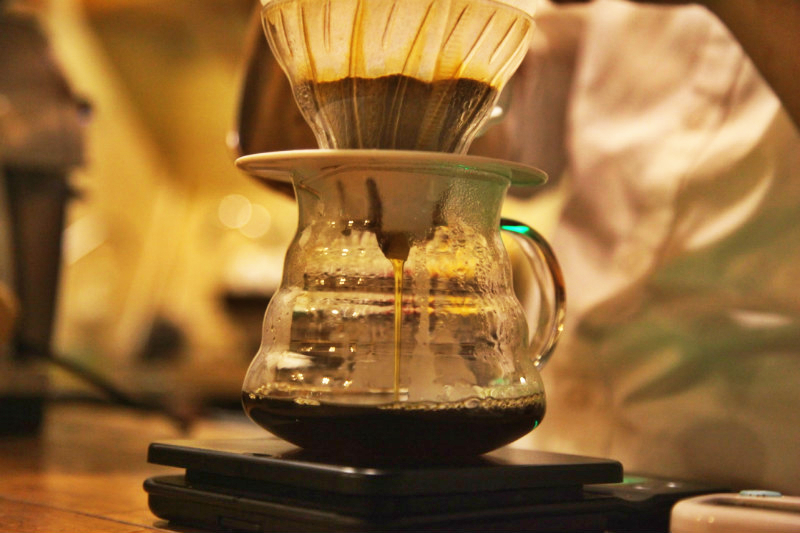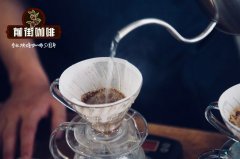What does the three waves of instant, Italian and boutique coffee mean? What is the definition of fine coffee?

Professional coffee knowledge exchange more coffee bean information please follow the coffee workshop (Wechat official account cafe_style)
Coffee actually has a long history, long enough to tell a long story. So this is the coffee story we want to tell. Coffee has become a popular drink all over the world, which can be divided into three waves, that is, the so-called coffee wave.
The first wave of coffee | instant coffee
From 1940 to 1960, it was mainly used for refreshing use, so whether it tastes good or not is not the point. The first to be widely used was on the battlefield of World War II, when soldiers used instant coffee as a daily drink to improve efficiency. When the soldiers left the army, they brought the habit of drinking coffee into their lives, which made "instant coffee" and "three-in-one coffee" very popular at that time.
In 1938, the Brazilian government and Nestle developed a more advanced spray drying method for the manufacture of instant coffee. The practice is to use hot steam to vaporize the water in the coffee beans, leaving the dry coffee extract. Instant coffee can quickly dissolve in hot water, storage and transportation space is small, resistant to storage, so it is very popular in the market. Due to the industrial production, low-quality coffee beans are often used, and there may be harmful residues in the production process, which is not recognized by the traditional coffee industry. And instant coffee on the baking degree of coffee beans is often not enough, stay in a more primary stage, can not fully reflect the aroma of coffee beans.
The second wave of coffee | espresso
Espresso (espresso)-based espresso began to appear in 1966, and the establishment of Starbucks in 1971, brought the second wave of coffee, latte, cappuccino and other Italian coffee began to become popular, but also developed to add syrup, whipped cream, concentrated flavor, soy milk, and spices and other changes. There were a large number of cafes during the second wave of coffee, and the popularity continued until 2000 and is still hot today. Espresso has been popular since the 1980s. The Pacific coast of the northwestern United States is believed to be the birthplace of this trend. In other parts of the world, espresso has also become a common method of making coffee in restaurants, bars and coffee shops.
The third wave of coffee | back to the original boutique coffee
Since the beginning of 2000, with more and more people drinking coffee, coffee lovers began to study the flavor of coffee and gain an in-depth understanding of the great influence of local conditions on the flavor of coffee, so the third wave of coffee emerged in pursuit of refinement. The desire to pursue the depth of coffee is then reflected in the choice of brewing forms and utensils of coffee, and the fine coffee is carefully tasted in the form of pure black coffee. For example, Aricha, Beloya and Geisha have the same texture as red wine, varying degrees of acidity, thickness, finish, vintage, grower, process, all deeply affect the flavor and taste. Baristas also began to pursue more detailed flavors in a more scientific way, and to gain an in-depth understanding of the source of each unique flavor. Emphasize and pay attention to the characteristics of each kind of coffee beans, the varieties of coffee beans planted, which manor from which producing area, when to harvest and so on, while coffee farmers or estates also manage and master the quality of their own coffee beans, this concept is called "FROM SEED TO CUP from beans to cups", that is, the circulation process of coffee beans is completely transparent. With the advent of the third wave of coffee, with the spirit of "openness and sharing", the return of taste itself is more in pursuit of taste, and the concept of boutique coffee has gradually become widely known. The third wave of coffee is really an eye-opener. Unlike the bitter and charcoal-burning flavor of old-school coffee, coffee is just a cup of adult drink for people who don't like bitterness. Then through the way of roasting and brewing back to the original taste, consumers can rediscover the depth of each kind of coffee and taste it like tasting red wine.
Important Notice :
前街咖啡 FrontStreet Coffee has moved to new addredd:
FrontStreet Coffee Address: 315,Donghua East Road,GuangZhou
Tel:020 38364473
- Prev

Characteristics of BOP-GW-15 Geisha Coffee treated with Honey from San Teresa Manor in Panama
Professional coffee knowledge exchange more coffee bean information please follow the coffee workshop (Wechat official account cafe_style) Panama Santa Teresa Manor Geisha honey treatment BOP-GW-15 country: Panama: Santa Clara, Chiriqui Province altitude: 1400M1800M treatment: honey treatment grade: SHB variety: geisha flavor description: floral fragrance,
- Next

Characteristics of Rwanda Coffee washed with Red Bourbon in Grey Mountain of Rwanda
Professional coffee knowledge exchange more coffee bean information please follow the coffee workshop (Wechat official account cafe_style) Rwanda Grey Mountain Red bourbon washing Rwanda Huye Mountain Red Bourbon washed production country: Rwanda Rwanda Origin: Huye District, Southern Province Water washing Plant: grey Mountain Water washing Plant Huye Mountain washing station Water
Related
- Detailed explanation of Jadeite planting Land in Panamanian Jadeite Manor introduction to the grading system of Jadeite competitive bidding, Red bid, Green bid and Rose Summer
- Story of Coffee planting in Brenka region of Costa Rica Stonehenge Manor anaerobic heavy honey treatment of flavor mouth
- What's on the barrel of Blue Mountain Coffee beans?
- Can American coffee also pull flowers? How to use hot American style to pull out a good-looking pattern?
- Can you make a cold extract with coffee beans? What is the right proportion for cold-extracted coffee formula?
- Indonesian PWN Gold Mandrine Coffee Origin Features Flavor How to Chong? Mandolin coffee is American.
- A brief introduction to the flavor characteristics of Brazilian yellow bourbon coffee beans
- What is the effect of different water quality on the flavor of cold-extracted coffee? What kind of water is best for brewing coffee?
- Why do you think of Rose Summer whenever you mention Panamanian coffee?
- Introduction to the characteristics of authentic blue mountain coffee bean producing areas? What is the CIB Coffee Authority in Jamaica?

